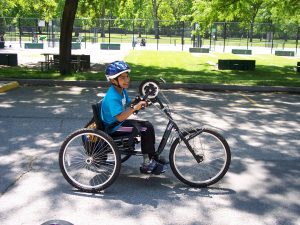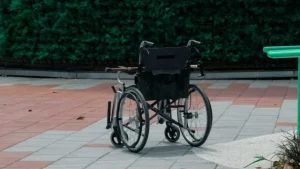Key Facts
More than 1 billion people are affected by disability.
The number of people with disabilities is growing rapidly. This is due, in part, to demographic trends and the increasing burden of chronic diseases.
Almost everyone will experience a temporary or permanent disability at some point in their lives.
People with disabilities are experiencing much greater hardship during the COVID-19 pandemic.
When accessing health care, people with disabilities often face stigma and discrimination and receive substandard services.
There is an urgent need to mainstream disability at all levels of the health system, especially at the level of primary health care.

Disability refers to the interactions of people with disabilities (such as cerebral palsy, Down syndrome, and depression) with personal and environmental factors (such as negative attitudes from others, inaccessibility of vehicles and public infrastructure, and limited social support).
It is estimated that more than 1 billion people are affected by disability. This is approximately 15% of the world’s population, with up to 190 million (3.8%) of people aged 15 years and older experiencing significant functional limitations, often requiring medical services. The number of people with disabilities is increasing due to the increasing burden of chronic diseases and the aging of the population. Disability is directly related to human rights, as people with disabilities due to their condition face numerous violations of their rights, including acts of violence, mistreatment, prejudice and disrespect; this is often accompanied by other forms of discrimination, in particular on the basis of age and gender. In addition, people with disabilities face various barriers, stigma and discrimination in accessing health care and related services and support systems. Because disability is more prevalent in lower-middle-income countries, and since disability and poverty are mutually reinforcing and both perpetuate, supporting people with disabilities is a development priority.
Forms of disability can be very different. Some of the disability-causing health conditions worsen a person’s condition and require constant attention from medical professionals, while others do not. However, all people with disabilities have the same general health needs as everyone else and therefore need access to basic health services. Article 25 of the UN Convention on the Rights of Persons with Disabilities (CRPD) affirms the right of persons with disabilities to the highest attainable standard of health without discrimination. However, the reality is that few countries provide people with disabilities with adequate and quality services.
Barriers to Getting Medical Care
When trying to access health care, people with disabilities face a variety of barriers themselves, including those listed below.
Obstacles caused by the attitude of others
People with disabilities often complain about prejudice, stigmatization and discrimination from health professionals and other healthcare workers.
Many health professionals lack sufficient knowledge and understanding of the rights of people with disabilities and their health needs, and are not adequately trained and trained in disability issues.

Many health care facilities do not have policies in place to accommodate the needs of people with disabilities. Such policies may include increased appointment times for people with disabilities, more flexible appointments, outreach services, and measures to reduce patient costs.
Women with disabilities face specific barriers to accessing sexual and reproductive health services and information. Health professionals often incorrectly believe that women with disabilities do not have sexual relations or are unable to perform motherhood.
People with disabilities are rarely invited to express their opinions and participate in decision-making on health care for this category of the population.
Physical Obstacles
Health care facilities and places of care are often remote from the main population or located in areas that are not accessible by vehicles adapted for people with disabilities.
People with disabilities do not have the opportunity to visit buildings and institutions with steps at the entrance and use the services if they find themselves on floors that cannot be reached by elevator.
Toilets, walkways, doors
swarms are often not adapted to the needs of wheelchair users or restrict the movement of people with mobility impairments.
Persons with disabilities may find it difficult to use non-adjustable furniture, including beds and medical examination chairs.
The premises of health facilities and other places of care are often poorly lit, do not have clear information signs, or have complex layouts that impede the movement of people.
Barriers to Communication
The main barrier to medical care for people with hearing impairments is the limited availability of written materials or sign language interpreters in health care settings.
Written patient information and prescriptions are not always presented in an accessible manner, such as Braille or large print, which makes it difficult for people with visual impairments.
Information for patients is often formulated in a complex way and suffers from an abundance of professional terms. Presenting health information in an easy-to-understand format, including clear language with illustrations and other visual elements, can make it easier for people with cognitive impairments to understand.
Financial Barriers
More than half of all people with disabilities in low-income countries are unable to pay for adequate health care.
Many people with disabilities also complain about the inability to pay for travel to medical facilities and purchase medicines, not to mention paying for appointments with medical specialists.
